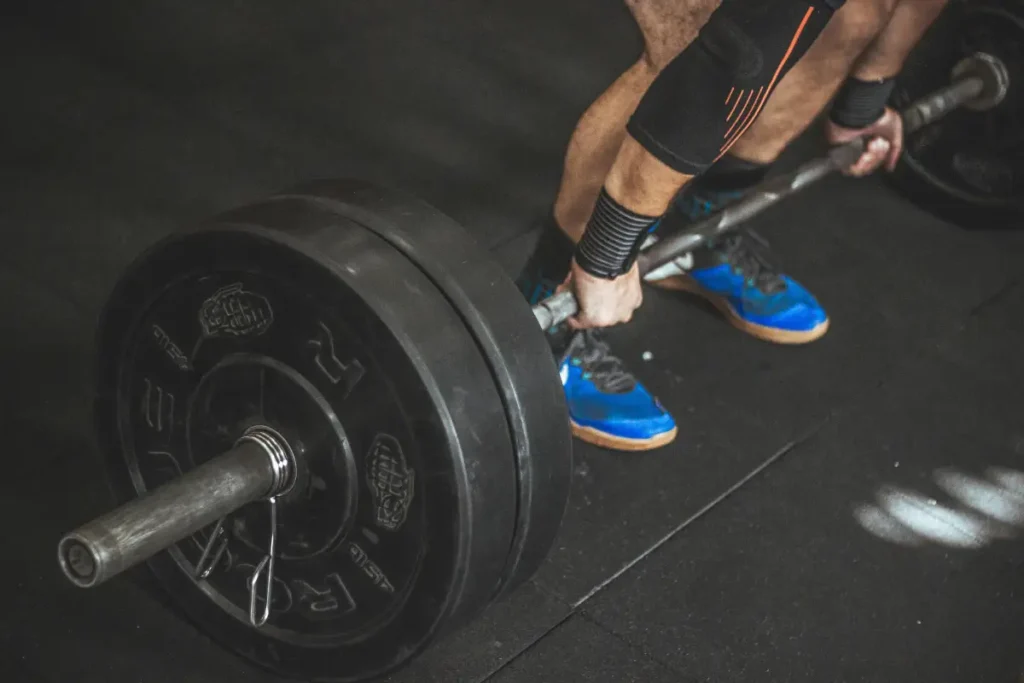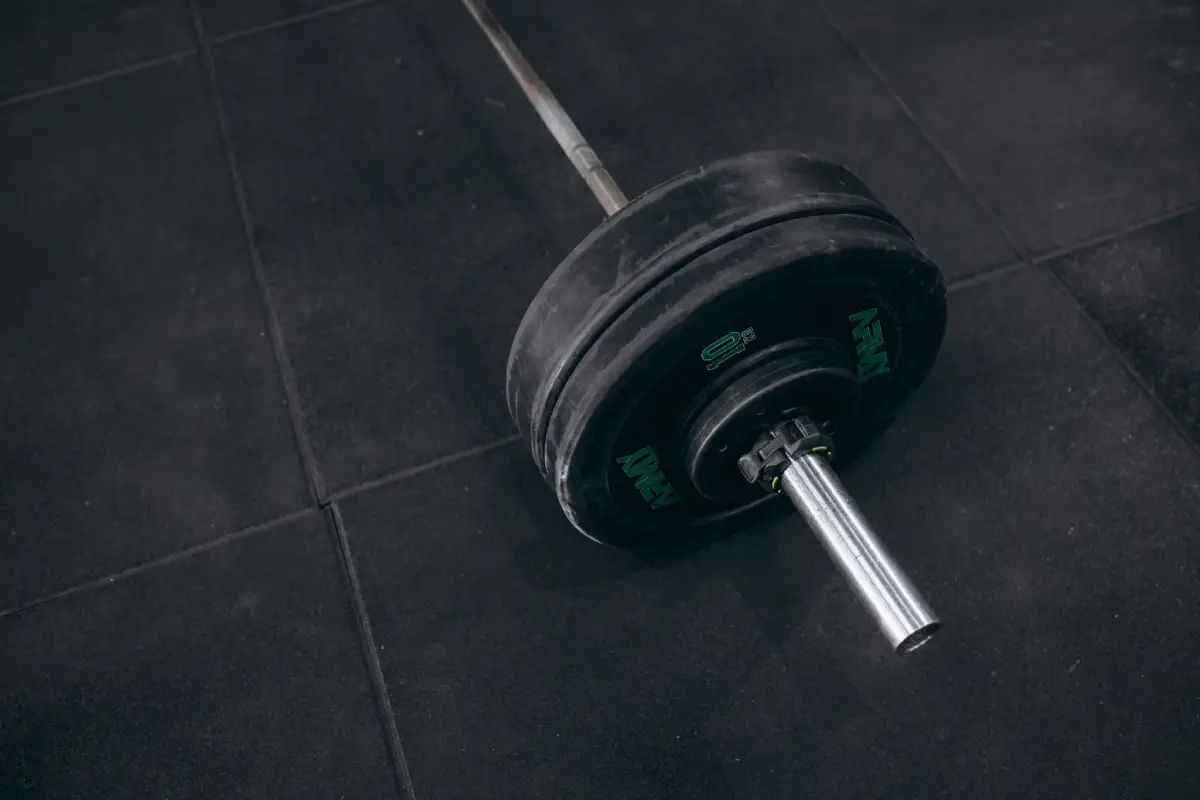Ever feel like your workout routine is missing something? That could be because you’re not giving enough love to your pulling muscles. A pull day workout targets essential areas like your back, biceps, and forearms, making it a cornerstone of any well-rounded fitness plan. Let’s dive into why pull day is crucial and how to build the perfect routine.
What Is a Pull Day Workout?

Pull day focuses on moving the weight toward your body, engaging muscles like your lats, traps, biceps, and more. Pull day plays a pivotal role in building strength and symmetry, whether you’re lifting heavy or sticking to bodyweight exercises.
Benefits of a Pull Day Workout
Improved Posture
Pull-day workouts significantly strengthen the back muscles, including the rhomboids, trapezius, and latissimus dorsi. These muscles are crucial in counteracting the typical forward-leaning posture associated with prolonged sitting, particularly in desk jobs. By developing these areas, individuals can promote better spine alignment, reduce the risk of musculoskeletal issues, and enhance overall body posture.
Balanced Physique
A well-rounded fitness regimen should incorporate both pushing and pulling movements. Pull day workouts specifically target the muscles involved in pulling actions, such as the back, biceps, and rear deltoids. This creates a balanced approach to strength training by ensuring the opposing muscle groups are developed equally, preventing imbalances that can lead to injuries and promoting a more aesthetically pleasing physique.
Enhanced Grip Strength
Many pull day exercises, such as deadlifts, pull-ups, and rows, require the significant engagement of the forearm and hand muscles, thereby improving grip strength. A firmer grip supports lifting heavier weights during pull day sessions. It enhances performance in various sports and daily activities, such as carrying groceries or doing manual tasks. This carries over to push day workouts, allowing individuals to secure a firmer grip when pushing exercises are performed.
Injury Prevention
Constructing a solid foundation of strength in the back and biceps through dedicated pull day workouts provides essential support for other lifts and everyday movements. Also, strengthening these muscle groups helps stabilize the shoulders and spine, which can mitigate the risk of injuries often associated with poor lifting mechanics. Moreover, a strong upper body enhances confidence in fitness routines and reduces the risk of strains and injuries.
Incorporating pull day workouts into a regular fitness routine yields numerous benefits, including improved overall health, functional strength, and athletic performance.
Muscle Groups Targeted on Pull Day
Back
The back comprises several key muscles that are crucial in pulling movements. Specifically, the latissimus dorsi, commonly called the lats, provides width and contributes to an impressive back profile. The trapezius, or traps, are located at the upper back and are essential for posture and shoulder movement, while the rhomboids, found between the shoulder blades, assist in retracting the scapula. Lastly, the spinal erectors, which run along the spine, are fundamental for maintaining posture and overall stability.
Biceps
On pull day, the biceps are heavily engaged to assist in bending the elbow during pulling exercises. This includes both the long and short heads of the biceps brachii. The long head, which runs along the outer part of the arm, contributes to the peak of the bicep. In contrast, the short head on the inner side helps with muscle mass and overall thickness.
Forearms
Forearm muscles, including the flexor and extensor, are vital for improving grip strength and stability during pulling exercises. The flexor muscles on the anterior side of the forearm enable the wrist and fingers to bend and grip, while the extensors on the posterior side extend the wrist and fingers. A strong forearm foundation supports better performance and reduces the risk of injury during lifting.
Rear Delts
The rear deltoids, or rear delts, are an essential muscle group for shoulder health and functionality. These muscles help stabilize the shoulder joint, enhance mobility, and prevent imbalances from focusing too much on the front deltoids. Furthermore, well-developed rear delts contribute to a balanced upper-body physique and improve performance in various pulling and overhead exercises.
Back Exercises for Pull Day

The back is the primary focus of pull day workouts, as it comprises several key muscles responsible for strength, posture, and overall physique. Incorporating diverse movements ensures balanced development and minimizes weaknesses. Below are some must-do back exercises:
Pull-Ups
Mastering this classic move will improve your functional fitness and overall pulling power and give you a sense of accomplishment that will keep you motivated on your fitness journey.
How to Perform:
- Grab the pull-up bar with your hands positioned overhand. Position your hands wider than your shoulders.
- Hang fully extended, with your arms straight and shoulders engaged (not shrugged).
- Pull your chest to the bar by pushing your elbows down and back.
- Pause when your chin is above the bar, then slowly lower yourself back to the starting position.
Tip: Avoid swinging or using momentum—keep your movement smooth and controlled for maximum muscle engagement. Concentrate on bringing your shoulder blades together at the peak of the pull.
Barbell Rows
Barbell rows are not only a powerful compound exercise that targets your back muscles, biceps, and core, but they also help build strength for pulling motions and enhance posture.
How to Perform:
- Stand with your feet shoulder-width apart and hold the barbell with an overhand hold, slightly wider than shoulder-width.
- Lean forward at your hips, keeping your knees slightly bent. Keep your back straight and your chest up.
- Draw the barbell toward your lower chest by squeezing your shoulder blades together.
- Lower the barbell back down to where you started, taking your time and being steady.
Tip: Keep your core engaged to prevent injury and avoid rounding your back. Also, aim for a smooth, steady pull to maximize effectiveness.
Deadlifts
Deadlifts are the king of full-body exercises. They build strength in the posterior chain, including the glutes, hamstrings, lower back, and core.
How to Perform:
- Stand with your feet hip-width apart. Keep the barbell close to your shins.
- Bend at your waist and knees to grab the bar with both hands, a little wider than your shoulders.
- Stand tall with your back straight, chest out, and shoulders back. Lift the bar by pushing your hips and knees up together.
- Stand tall at the top, then lower the bar to the ground with control by reversing the movement.
Tip: Avoid jerking the bar off the ground. Use a steady lift, keeping your core and lats engaged in protecting your back.
Lat Pull-Downs
The lat pull-down is an excellent exercise for developing your lats and creating a V-shaped upper body. Additionally, it’s perfect for those working on building pull-up strength.
How to Perform:
- Sit on the pull-down machine and adjust the knee pad to keep you stable.
- Hold the bar with a wide grip, using your hands over the top.
- Lower the bar towards your chest, actively squeezing your shoulder blades together as you do so.
- Slowly return the bar to the starting position with control, keeping tension in your lats.
Tip: To maintain proper form, avoid leaning too far back; instead, keep your torso upright and focus on engaging your lats rather than relying solely on your arms. Additionally, for optimal technique, drive your elbows down and back.
Biceps Exercises for Pull Day

Muscular biceps not only improve aesthetics but also enhance your pulling power. Here are some exercises to include:
Standard Barbell Curls
The standard barbell curl is, therefore, an essential exercise that builds the size and strength of your biceps and helps improve your grip stability.
How to Perform:
- Stand up tall with your feet apart. Hold the barbell with your hands facing you.
- Keep your elbows close to your sides and curl the barbell upward by contracting your biceps.
- Stop for a moment when the barbell is up. Then, slowly bring the barbell back down.
Tip: Avoid using momentum or swinging your back. Keep the movement slow and focus on isolating your biceps for maximum effectiveness.
Hammer Curls
Hammer curls are a simple exercise that works the brachialis muscle, which is under the biceps and helps make arms thicker.
How to Perform:
- Hold a dumbbell in each hand, ensuring your palms face each other with a neutral grip.
- Position your elbows close to your sides and raise the dumbbells upward in unison.
- Pause at the top, then lower the dumbbells back down with control.
Tip: Keep your wrists neutral and avoid bending them during the curl to maintain proper form and reduce strain.
Incline Dumbbell Curls
Incline dumbbell curls place your biceps in a stretched position, maximizing muscle activation and promoting growth.
How to Perform:
- Place an incline bench at a 45-degree angle and sit back with a dumbbell in each hand, arms fully extended.
- Curl the dumbbells upward while keeping your elbows stationary.
- Pause at the movement’s top, then lower the dumbbells back to the starting position.
Tip: To maintain tension in the biceps, focus on a full range of motion and avoid lifting your elbows off the bench.
Concentration Curls
Concentration curls are an exercise that focuses on the biceps. They help you strengthen your biceps and improve their shape.
How to Perform:
- Sit on a bench with your feet flat and hold a dumbbell in one hand.
- Rest your elbow on the inside of your thigh and fully extend your arm.
- Curl the dumbbell upward toward your shoulder while keeping your upper arm stationary.
- Lower the dumbbell back to the starting position slowly and with control.
Tip: Use a slow and deliberate motion to maximize the squeeze at the top. Avoid letting the dumbbell drop too quickly on the way down.
Forearm Exercises for Pull Day
The forearms are often overlooked for grip strength and overall pulling performance. Muscular forearms ensure you can lift heavier weights without grip limitations.
Wrist Curls
Wrist curls are a key exercise for strengthening your forearms and improving grip strength, which is essential for heavy lifting and daily tasks.
How to Perform:
- Sit on a bench and hold a barbell or dumbbell with an underhand grip, resting your forearms on your thighs.
- Let your wrists hang slightly off the edge, palms facing upward.
- Curl the weight upward by flexing your wrists, keeping your forearms stationary.
- Lower the weight back to the starting position with control.
Tip: Use a light to moderate weight to focus on proper form and avoid jerky movements. A full range of motion is key for effective results.
Reverse Curls
Reverse curls target your brachialis and forearm muscles, helping to enhance arm thickness and improve overall grip strength.
How to Perform:
- Stand upright, holding a barbell or dumbbell with an overhand grip; hands shoulder-width apart.
- Keep your elbows close to your sides and curl the weight upward by contracting your brachialis and forearms.
- Pause briefly at the top, then lower the weight back to the starting position with control.
Tip: Keep your wrists neutral throughout the movement to avoid strain and maximize muscle engagement. A controlled tempo is crucial for effectively targeting the forearms
Sample Pull Day Workout Routine
Beginner
- Pull-ups (Assisted): 3 sets of 8-10 reps
- Dumbbell Rows: 3 sets of 10-12 reps
- Bicep Curls: 3 sets of 10-12 reps
- Face Pulls: 3 sets of 15 reps
Intermediate
- Deadlifts: 4 sets of 5 reps
- Barbell Rows: 3 sets of 8-10 reps
- Hammer Curls: 3 sets of 12 reps
- Rear Delt Flys: 3 sets of 8 reps
Advanced
- Weighted Pull-ups: 4 sets of 6-8 reps
- Pendlay Rows: 3 sets of 10 reps
- Incline Dumbbell Curls: 3 sets of 8 reps
- Wrist Curls: 3 sets to failure
Common Mistakes to Avoid on Pull Day
Neglecting Form
Keeping proper form is one of the essential parts of any workout routine. Poor technique can hinder your progress and increase your risk of injury when performing pull exercises, such as deadlifts or pull-ups. For instance, rounding your back during a deadlift can lead to serious spinal issues, while swinging your body during pull-ups can reduce the effectiveness of the exercise. Always prioritize form over weight; consider using a mirror or filming your workouts to ensure you perform each movement correctly. Additionally, feel free to seek advice from a trainer who can provide personalized feedback.
Overtraining
While pushing your limits can be a key component of progress in the gym, allowing your muscles adequate time to recover is essential. Overtraining can lead to fatigue, decreased performance, and even injury. Schedule regular rest days between pulling workouts to let your body restore and grow stronger. Listen to your body. If you feel very sore or tired, it could mean that you need to take a break or lower the intensity of your workouts. Incorporating lighter sessions or active recovery activities, like yoga or swimming, can also be beneficial.
Ignoring Smaller Muscles
Many individuals focus solely on the major muscle groups during pull workouts, such as the back and biceps. However, ignoring smaller muscle groups can cause muscular imbalances and hinder overall strength development. Incorporating accessory exercises, such as face pulls, rear delt flies, and rotator cuff exercises, is crucial to ensure that all areas are targeted effectively. These exercises not only help improve posture but also enhance shoulder stability, which is vital for safely performing heavier lifts. Therefore, aim to include a variety of movements in your pull day routine to create a well-rounded workout that addresses all aspects of upper body strength.
Nutrition for Pull Day Recovery

Your pull day workout isn’t complete without proper nutrition. Recovery is where muscles grow and strengthen, so prioritize these nutritional guidelines:
Protein-Rich Foods:
To repair muscle fibers, consume lean protein sources like chicken, fish, eggs, and plant-based options (tofu, lentils).
Carbohydrates:
Replenish glycogen stores with complex carbs like sweet potatoes, quinoa, and whole grains.
Healthy Fats:
Include omega-3-rich foods like salmon and chia seeds to reduce inflammation.
Hydration:
Drink a lot of water to help your muscles recover and reduce soreness.
Supplements:
Consider whey protein, creatine, or BCAAs for enhanced recovery and performance.
FAQs
Ideally, 1-2 times weekly as part of a push-pull-legs split.
A push day targets muscles in pushing motions (chest, shoulders, triceps). In contrast, a pull day focuses on muscles involved in pulling motions (back, biceps, traps).
Yes! Use bodyweight moves like inverted rows and towel curls.
Absolutely! Beginners should start with bodyweight exercises. As they progress, they can gradually add weights.
For advanced lifters, yes, but beginners should focus on proper form first.
Conclusion
A well-structured pull day workout is essential for balanced strength, aesthetic symmetry, and overall fitness. By focusing on pulling movements that target the back, biceps, and forearms, you create a solid foundation for athletic performance and injury prevention. Additionally, remember to pair your workouts with proper nutrition, adequate rest, and consistent progression for the best results.
Ready to improve your fitness routine? Start incorporating these pull day exercises into your schedule today!

